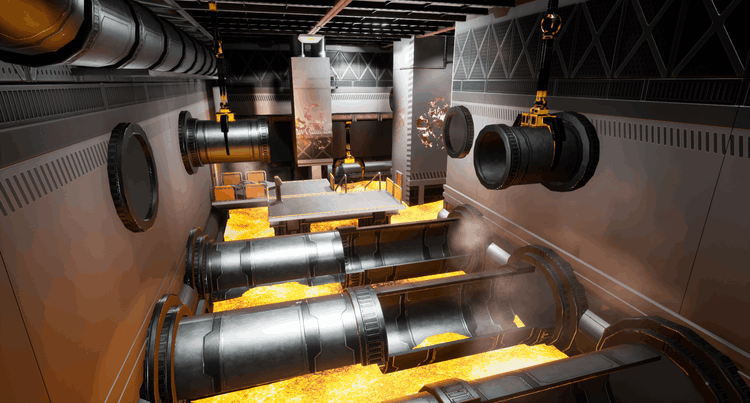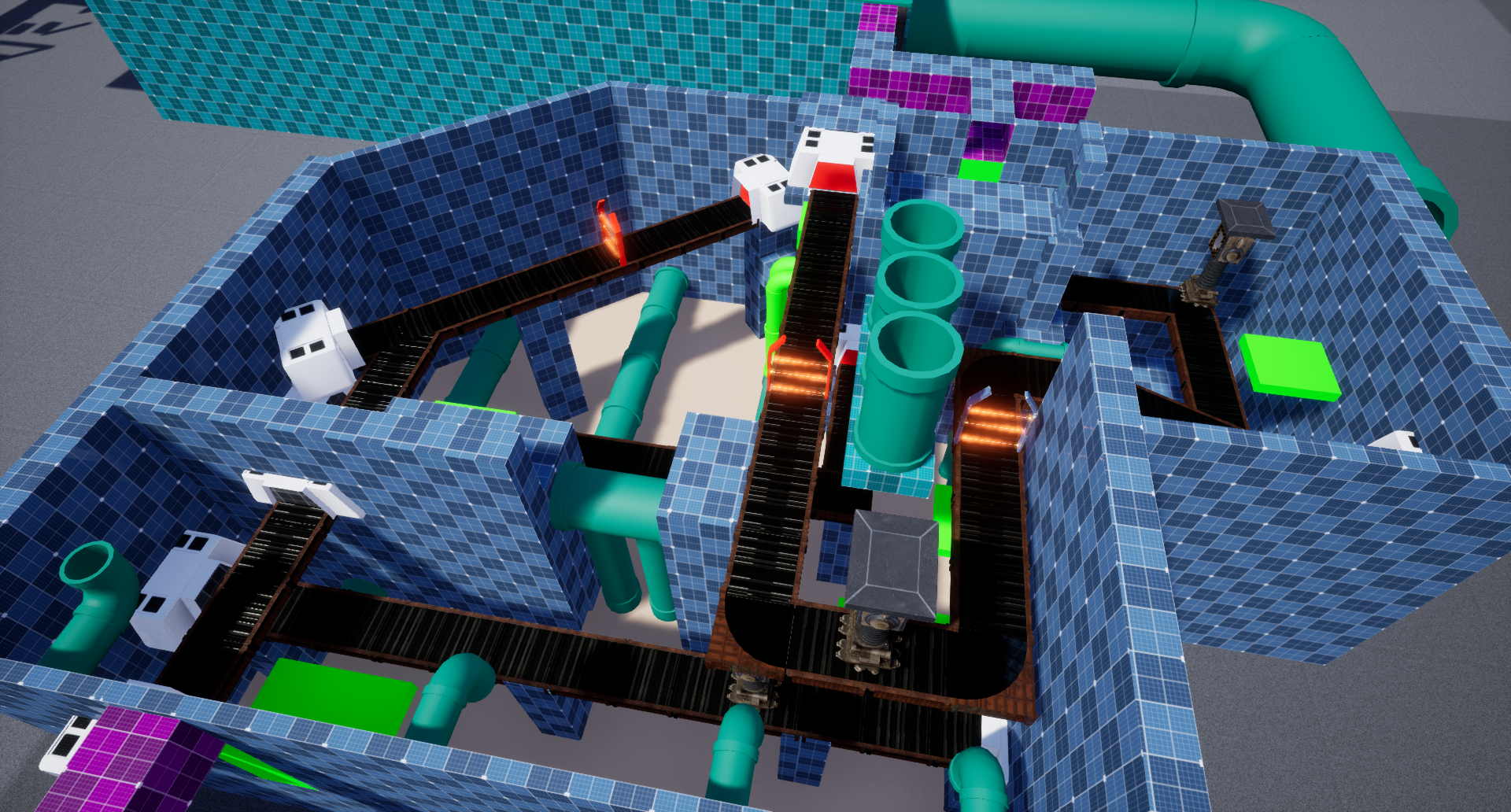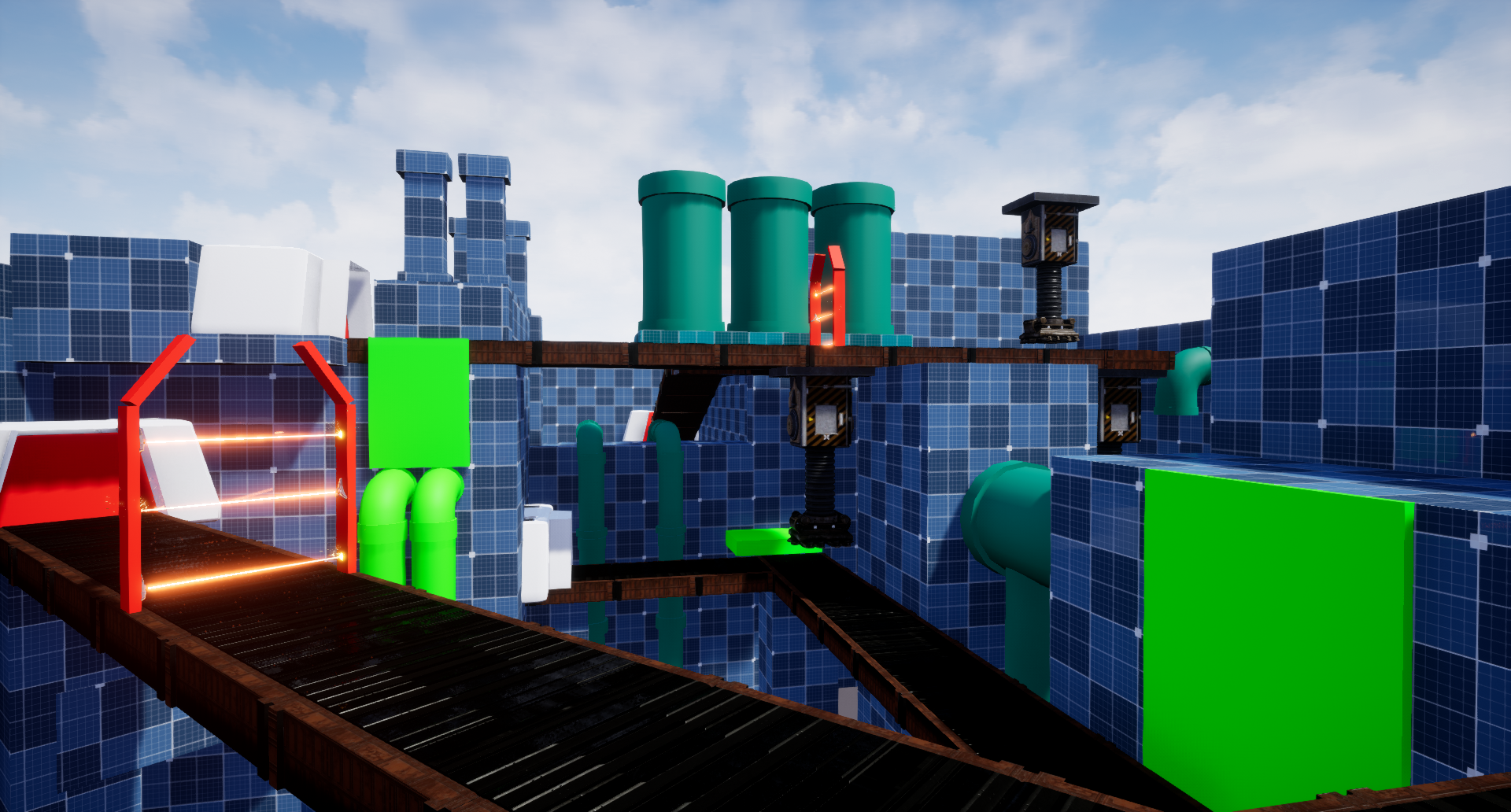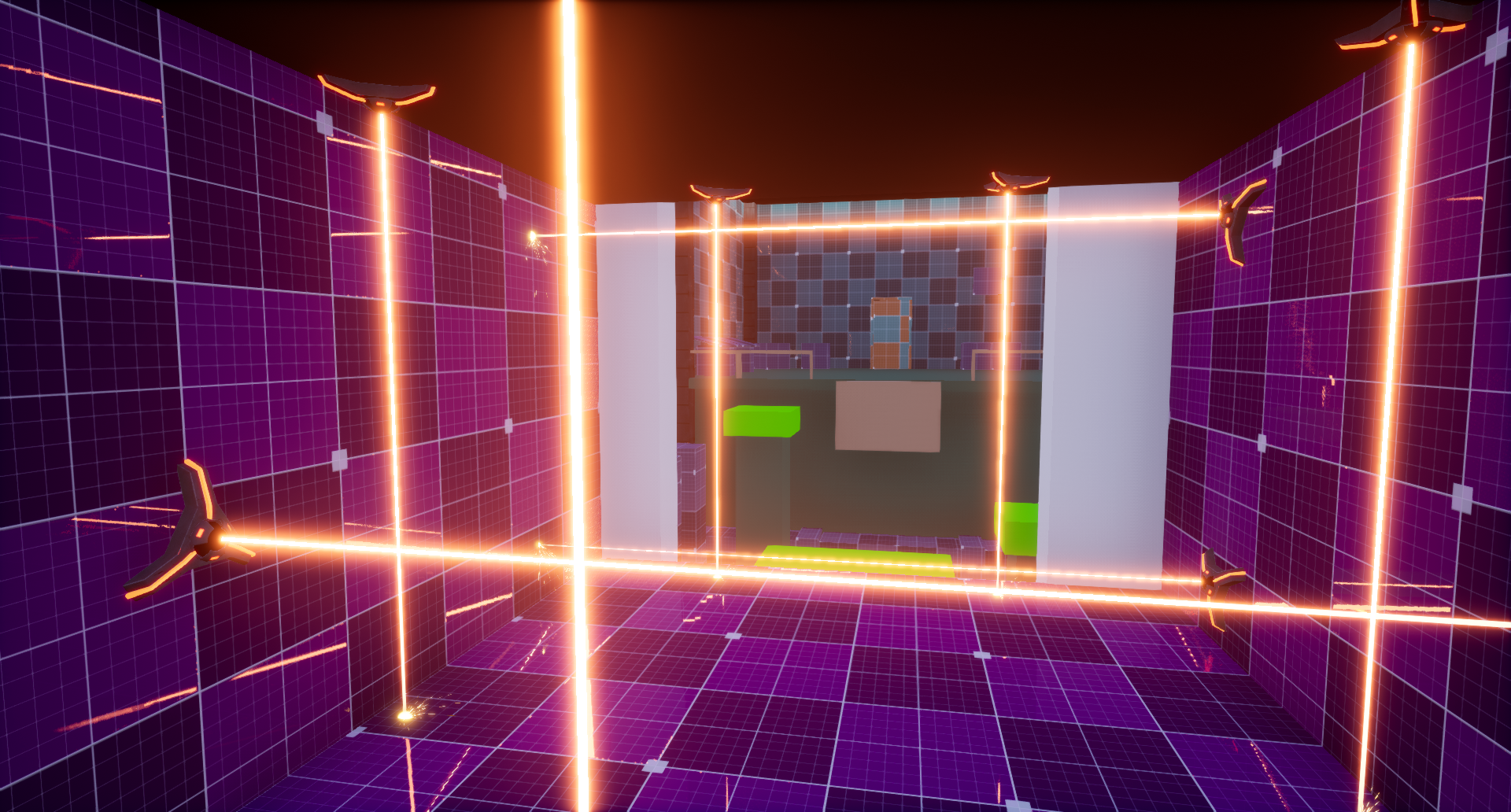Project Overivew
Team Size: 19 members multidisciplinary team
Genre: 3D Action Platformer
Setting: K3LVN is a sci-fi action platformer where you play as an experiment trying to escape a space station lab where they’re being imprisoned. Through changing their state of matter, they can stick, jump, and roll their way to freedom.
Time frame: 9 months (Dec 2021 to Aug 2022).
Software: Unreal Engine 4.27, Maya (for proxy level art), Perforce and Jira
My Role: As the Level Designer, I was given the complete ownership of the development of the ‘Foundry’ level. My responsibilities included:
Drafting level design documents with level overview maps and asset lists.
White boxing / Blockout of all the levels that formed the Foundry.
Creating UE4 Blueprints for several platforming challenges.
Rapid prototyping of levels to test various mechanics developed by the programmers. This iterative process included designing and building action blocks to find the most fun and challenging platforming sections.
Set dressing all the areas in the foundry using asset packs and assets made by the art team, to support environmental storytelling.
Assisted in lighting all the levels.
Using Level Sequencer to created scripted events and movements.










































